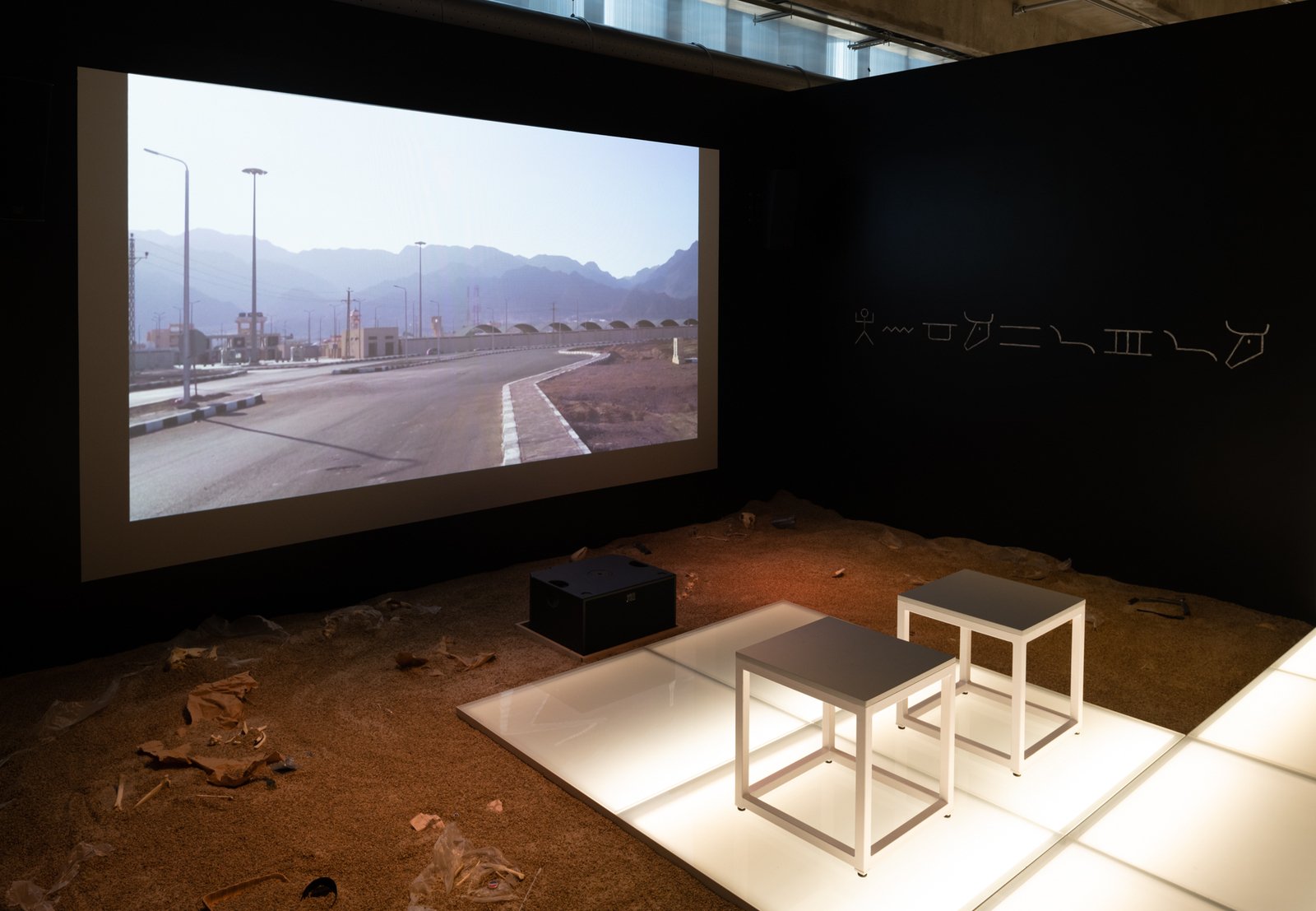Mitya Zilberstein in collaboration with Nataliya Tazbash


Mitya Zilberstein in collaboration with Nataliya Tazbash
SiNai, 2020–2021
Sand, chalk, garbage, bones, mollusc shells, video (10’ 31”)
Dimensions variable
Courtesy of the artists
Sound, music: Nikita Vasilenko
Color correction: Vladimir Mogilevsky
With Father Justin
The focus of Mitya Zilberstein’s works is often paradoxical places, such as Crimea or the Sinai Peninsula. In describing these places the term “militourism” is useful, coined by I-Kiribati and African-American poet Teresia Teaiwa for Pacific Island states and indicating a symbiotic merger of the military industrial complex and the tourism industry. Consider this description of Crimea by linguist and historian Andrei Zorin: “The world of white houses by the sea, gravel paths among laurel bushes, alleys of cypresses with plaster vases and statues, buglers in crimson kerchiefs at morning line-up, vacationers strolling in white pyjamas—this was our ancient Greece, our paradise, even though it was cleansed of excessive ethnic diversity by the father of the peoples after the war. But it was accessible, available through a trade union tour or via a directive from the pioneer organization for a citizen of the empire. Here they could holiday in peace, for the Red Banner Black Sea Fleet was on guard in Sevastopol’s bays, with sailors in white and blue uniforms and caps for whom girls in far-off villages were pining needlessly. It is here that the everyday and militaristic interpretations of Crimea’s allure for Russians become indistinguishable.”
Zilberstein, however, assumes a much broader perspective on such regions. The Sinai Peninsula in his latest work is a place of worship, a vibrant ecosystem, a garbage dump, and, to a lesser degree, a recreation zone and a military area. In this video essay based on a three-month journey to Sinai, Zilberstein explores anthropogenic traces in the desert and the slow pace of deep, geological time. The ecosophical leitmotif links SiNai to Cyprien Gaillard’s video Ocean II Ocean, which mixes shots of fossils in the walls and floors of metro stations in Russia and other countries of the former Soviet Union with archival footage of New York subway cars being dumped in the ocean. The instinctive desire to compare Zilberstein’s video essay to the works of the Palestinian-Russian artist and Arab Futurist Larissa Sansour is an error. The artist rightly interprets the desert as a database, because silicon (the “Si” in the work’s title) is a component of sand and an essential material in the manufacturing of modern computers (techno- optimistic “readings” of silicon as a symbol of high-tech industry and the main alternative to carbon life are left aside). Enriching and developing the comparison, Zilberstein introduces the concept of an archive-ecosystem—a symbiotic community of independent agents in a complex relationship of forming, exchanging, and spreading material evidence.
Zilberstein’s interpretation of the desert is a form of “radical textology” bringing a number of very different texts into a single hermeneutic circle as equals. On the screen, the “natural text” given in the landscape appears alongside graffiti, scraps of paper, and manuscripts from St. Catherine’s Monastery at the foot of Mount Sinai. The video’s “subtitles” mention the Scriptures and petroglyphs, and within the installation there is a quote adapted from Donna Haraway—“We are humus, not Homo, not anthropos; we are compost, not posthuman.”—which is translated into Biblical Hebrew and written in the Proto-Sinaitic script. Revisiting the famous biblical connection between human (Adam) and Earth (adamah), the quote brings together and disproves two mythologemes: the idea of human exceptionalism and the uncertain perspective of technological immortality. A real desert becomes a reminder of “the desert of the real” from the Matrix tetralogy, a sad landscape with charred ruins of the human world.
Another closure of the circle takes place at the level of the material embodiment of the work: the sand and the chalk inscription in the installation relate to a desert filled with biogenic material.
IV